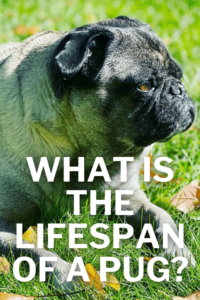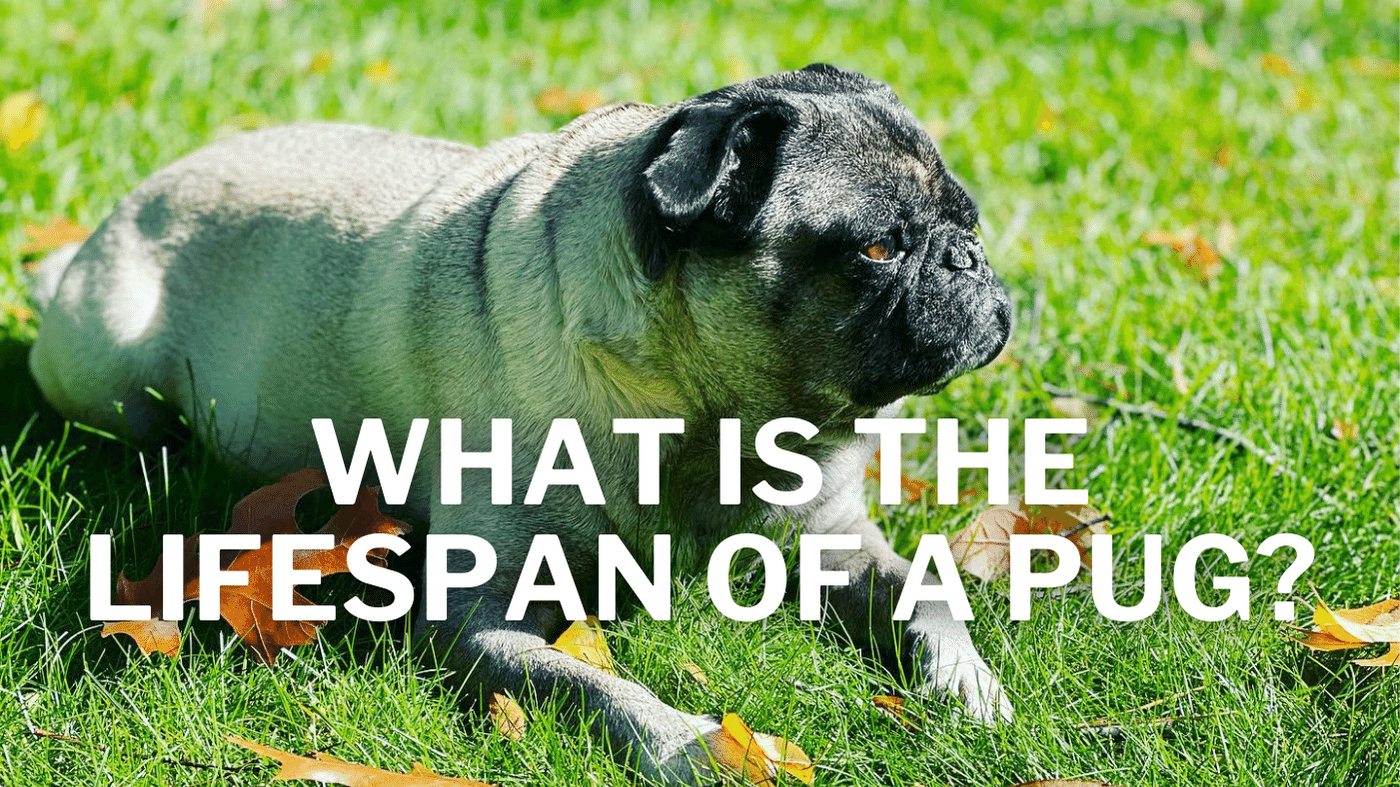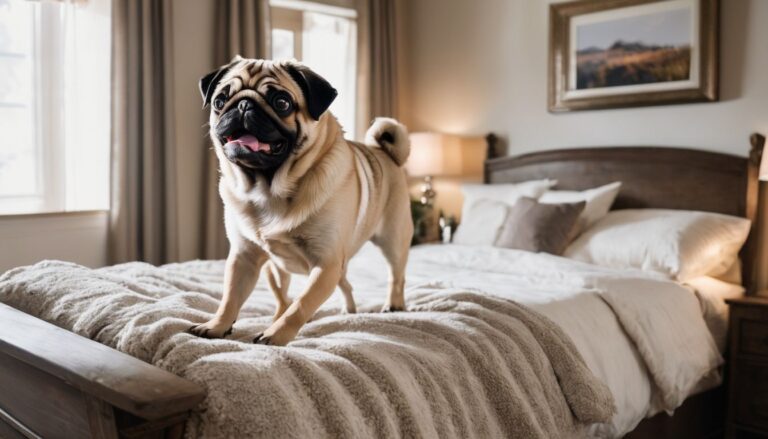Lifespan of Pug: Easy Tips to Keep Your Dog Around Longer
Welcome Pug Enthusiasts!
Welcome, fellow Pug enthusiasts, to a world of wrinkled charm and unbridled affection! If you’ve found your way here, chances are you already understand the unique allure of these endearing, squish-faced canines. Pugs, with their comical expressions and hearts of gold, have a special place in the hearts of dog lovers, and your presence here is a testament to that connection.
Want to know the lifespan of a pug?
Us too! As we never want to see our beloved Bruce Lee not be with us.
Pug enthusiasts are a breed of our own, bonded by their adoration for these small yet mighty dogs. Whether you’re an aspiring Pug parent, already sharing your life with one of these captivating companions, or simply harboring an affection for our four-legged friends, we’re here to delve into a subject that matters to all of us: the lifespan of our beloved Pugs.
The Fascinating Pug Breed
Before we embark on our journey to discover the average lifespan of Pugs, let’s take a moment to appreciate the unique qualities that make this breed so captivating. Pugs, often lovingly referred to as “little clowns,” have a rich history and distinctive appearance. Originally hailing from China, these dogs have a legacy that spans centuries.
Pugs are renowned for their signature short muzzles, wrinkled faces, and expressive eyes that seem to carry a universe of emotions. Their distinctive look and charming personalities have made them a beloved breed worldwide. While they may be small in stature, Pugs are giants in the art of companionship, bringing joy and laughter to families around the globe.
A Critical Question: How Long Will My Pug Companion Be with Me?
Our journey through this article will center on a question that concerns every Pug parent: What is the average lifespan expectancy of a Pug? As you cherish each moment with your furry family member, it’s natural to wonder how many years of love and companionship you can look forward to.
While we’ll explore the general average lifespan of Pugs, it’s crucial to remember that every Pug is unique, and their journey through life may differ. Pug owners (like ourselves) know that these dogs are more than just pets; they’re family members, and their health and happiness are paramount.
So, as we venture into the depths of Pug lifespans, let’s keep in mind that our goal is to equip you with valuable insights to help you provide the best care possible for your beloved Pug companion. Together, we’ll explore the factors that influence a Pug’s longevity, common health issues in the breed, and the steps you can take to ensure a long and happy life for your four-legged friend.
Now, let’s dive into the fascinating world of Pug lifespans and discover the secrets to extending those precious years together.
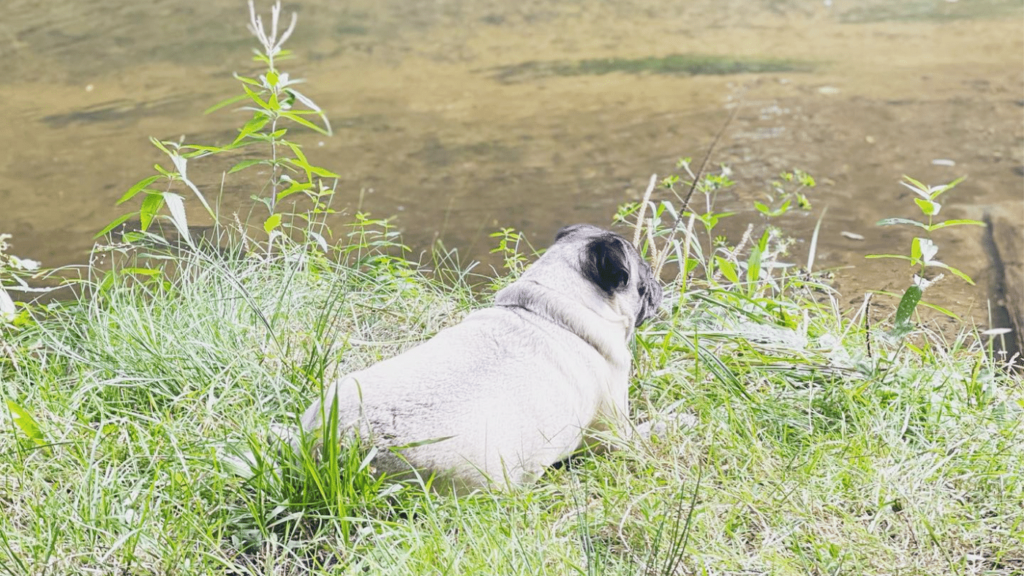
Understanding the Lifespan of Pug Factors
The Average Lifespan of a Pug
Let’s embark on the quest to unravel the mysteries of a Pug’s lifespan. While the exact numbers can vary, on average, Pugs are known to live for around 12 to 15 years. This is just an estimate, and many factors come into play when determining how long your Pug will grace your life with their presence.
Factors Impacting Pug’s Lifespan
Genetics and Pug Parentage
Genetics play a significant role in determining your Pug’s lifespan. Reputable breeders who prioritize the health and well-being of their Pugs can make a tremendous difference. Responsible breeding practices help reduce the risk of congenital diseases, ultimately contributing to a longer and healthier life for your Pug.
When considering a Pug companion, always opt for breeders who adhere to high standards of care, ensuring that your future furry friend has the best possible genetic foundation for a long and happy life.
The Influence of Size: Pugs vs. Larger Dogs
Pugs fall into the category of small breeds, which generally tend to enjoy a longer lifespan compared to their larger counterparts. Smaller dogs, like Pugs, typically have slower aging processes and experience less wear and tear on their bodies. This factor contributes positively to their life expectancy.
Gender Differences in Pug Longevity
Interestingly, gender can also influence how long your Pug will be your faithful companion. On average, female Pugs tend to live slightly longer than their male counterparts. While the difference may not be significant, it’s a reminder that every detail counts when it comes to extending your Pug’s happy years.
Pug’s Life Expectancy in Human Years
As Pug parents, it’s only natural to want to know how many human years your furry family member might enjoy. On average, a Pug’s life can be converted to human years by multiplying their age by about 5 to 6 years. For instance, a 5-year-old Pug would be roughly equivalent to a 25 to 30-year-old human.
Understanding the human-age equivalent can help you gauge the specific needs and health considerations of your Pug at various stages of their life. With this knowledge, you can make informed decisions regarding their care, diet, and overall well-being.
The Pug is indeed a unique and lovable breed, and your commitment to understanding their lifespan is a testament to your dedication as a Pug parent. But the journey of comprehending Pug lifespans doesn’t end here.
In the following sections, we’ll delve into the health issues commonly associated with Pugs and explore how you can maximize their longevity through responsible care and proactive measures.
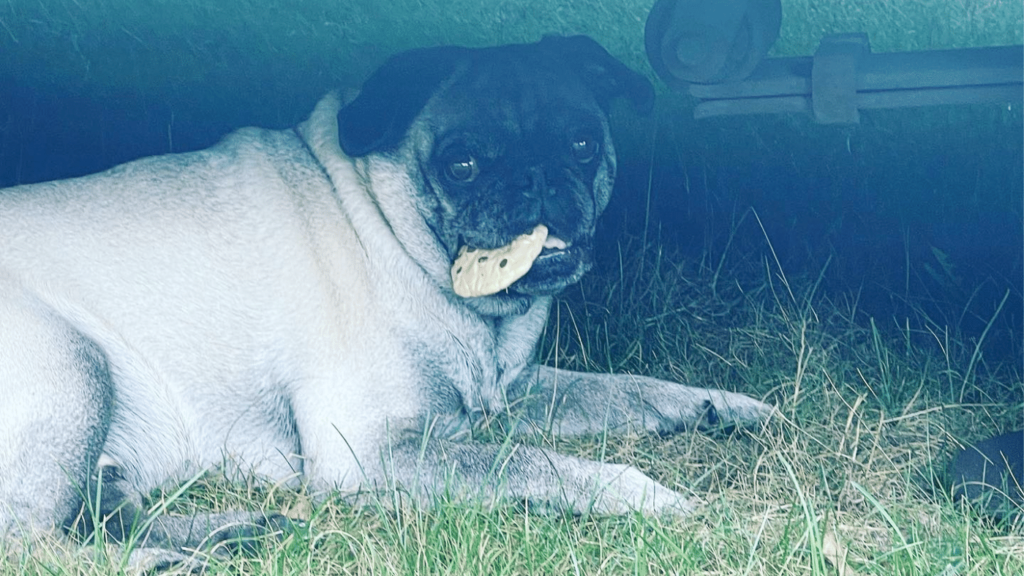
Common Health Issues in the Lifespan of Pugs
Pugs are undoubtedly charming and delightful, but they are not without their share of health concerns. To truly understand their lifespan, we must delve into the common health issues that these lovable companions often face.
Brachycephalic Breeds and Respiratory Problems
Breathing Issues in Pugs
One of the most recognized characteristics of Pugs is their adorable flat face, a trait associated with brachycephalic breeds. While this feature contributes to their irresistible charm, it also presents a challenge – breathing. Pugs are prone to respiratory issues due to their flat faces, making it crucial to monitor their breathing from puppyhood to their golden years.
Brachycephalic Obstructive Airway Syndrome (BOAS)
In our dedication to responsible pet ownership, it’s essential to address Brachycephalic Obstructive Airway Syndrome (BOAS). This syndrome encompasses several respiratory problems often seen in brachycephalic breeds like Pugs. By educating yourself on these issues, you can better understand the importance of regular vet check-ups and make informed decisions about your Pug’s care.
Neurological Disorders
Pug Dog Encephalitis (PDE)
Pug Dog Encephalitis, or PDE, is a devastating neurological disorder that affects some Pugs. It leads to inflammation of the brain, resulting in a loss of muscle control, seizures, and, ultimately, a shortened lifespan. While PDE is relatively rare, it is essential to be aware of the symptoms and risk factors associated with this condition, particularly if you’re considering adding a Pug to your family.
Loss of Muscle Control and Spinal Cord Issues
Neurological issues can significantly impact a Pug’s quality of life. Conditions that cause a loss of muscle control and spinal cord problems may reduce mobility and overall well-being. Understanding these conditions is the first step in early detection and proactive management to ensure the best possible life for your Pug.
Heart Problems and Their Impact on Lifespan
Heart Disease in Pugs
Pugs, like many small breeds, are prone to heart disease. Understanding the risks and potential symptoms is crucial in providing your Pug with the best care and extending their lifespan. Regular veterinary visits can help detect heart issues early, allowing for effective management and improved quality of life.
Understanding Heart-Related Issues
While heart disease is a common concern for Pugs, it’s essential to explore the different heart-related issues they may face. Knowledge about these issues empowers Pug owners to take the necessary precautions, make informed choices about their pet’s diet and exercise, and provide a comfortable, loving environment for their furry family members.
Skin and Other Health Conditions
Yeast Infections and Fungal Skin Tumors
Skin problems, such as yeast infections and fungal skin tumors, can affect Pugs. These issues can lead to discomfort and require ongoing care. Maintaining your Pug’s skin health through regular grooming and attention to dietary needs can contribute to a happier and healthier life.
Dental Care and Skin Infections
Proper dental care is an often-overlooked aspect of Pug health. Dental issues can lead to a host of other health concerns, affecting their lifespan. Additionally, skin infections may arise if a Pug’s skin is not adequately cared for. By incorporating good dental hygiene and skin care into your Pug’s routine, you can help prevent these problems and potentially extend their life.
Understanding the health issues commonly associated with Pugs is essential for responsible ownership. In the next section, we’ll explore how you can maximize your Pug’s lifespan through responsible breeding, attentive care, and a loving environment.

Maximizing Your Pug’s Lifespan
Now that we’ve explored the potential health challenges Pugs may face, let’s shift our focus to how you, as a dedicated Pug parent, can actively contribute to maximizing your furry friend’s lifespan.
Responsible Breeding: The Role of Reputable Breeders
Choosing a Pug from a reputable breeder is the foundation for a long and healthy life. Responsible breeders prioritize the well-being of their dogs and adhere to strict breeding standards. This significantly reduces the risk of congenital diseases and genetic issues. By selecting a Pug from a reputable source, you’re setting your four-legged friend up for a better, healthier life from the very beginning.
Proper Care for a Healthy Pug
High-Quality Dog Food and Healthy Diet
The old adage, “You are what you eat,” rings true for Pugs as well. Providing your Pug with a balanced, high-quality diet is a cornerstone of their well-being. Opt for dog food with real, recognizable ingredients and steer clear of fillers or artificial additives. A healthy diet not only contributes to a longer life but also enhances their overall vitality and happiness.
Regular Exercise and Weight Management
Pugs have a penchant for plumpness, which can lead to a host of health issues. Regular exercise is vital in keeping your Pug at a healthy weight. Engaging them in physical activities like daily walks, playtime, and even simple exercises can do wonders for their cardiovascular health and longevity.
Dental Care and Eye Health
Pugs are not immune to dental problems, which can affect their overall health. Regular brushing and professional dental care are essential to keep their teeth and gums in top shape. Additionally, don’t overlook their precious, expressive eyes – routine care can help prevent common eye issues.
Routine Vet Check-ups: A Must for Pug Owners
One of the most critical factors in extending your Pug’s life is regular vet check-ups. These visits can help identify health concerns early and ensure that your Pug receives timely treatment. Vaccinations, parasite control, and other preventative measures play a crucial role in keeping your Pug healthy and happy.
Providing a Healthy Lifestyle for Your Pug
Socializing Your Pug
Pugs are social animals, and they thrive on interaction. Socialization is not just a pleasure for them; it’s also a key component of their overall well-being. Regular interactions with other dogs and humans can enhance their mental and emotional health, reducing stress and ensuring a happier life.
The Importance of a Stress-Free Environment
Stress can impact a Pug’s health and overall lifespan. Create a peaceful, stress-free environment for your Pug by providing comfort, love, and routine. By minimizing anxiety and stressors in their life, you contribute to their well-being and ensure a longer, happier life together.
Pug’s Life Span Around the World: A Glimpse from South Africa
As we contemplate the factors that contribute to a Pug’s lifespan, let’s take a moment to consider the Pug’s life span around the world. In South Africa, for example, where climate and living conditions may differ from other regions, it’s intriguing to observe how Pugs adapt and thrive. Cultural and regional differences may influence their life expectancy, and by understanding these nuances, you can make informed choices to maximize your Pug’s lifespan, no matter where you call home.
In the next section, we’ll wrap up our exploration with a glimpse into the promising future of Pug lifespans. We’ll discuss the pivotal role Pug owners play in shaping their beloved companions’ well-being and touch on the exciting advancements in Pug health research.
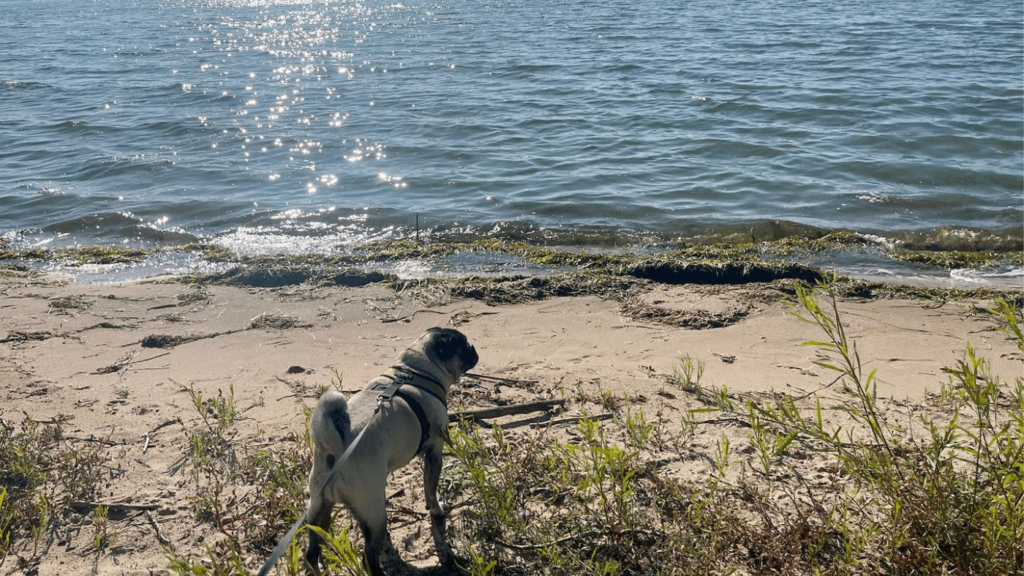
A Promising Future for Pug Lifespan
As we near the end of our journey through the realm of Pug lifespans, it’s essential to cast a glance into the future and the positive role Pug enthusiasts can play in extending the lives of these endearing companions.
The Role of Pug Owners
Pug owners are the first line of defense when it comes to ensuring a long and healthy life for their four-legged friends. Your role is crucial, and your dedication to the well-being of your Pug can make a significant difference. By following the guidelines outlined in this article and providing your Pug with love, care, and attention, you’re setting the stage for a bright future.
Remember that Pugs thrive on companionship and emotional connections. Being there for them, creating a loving and stress-free environment, and actively participating in their overall well-being can lead to a more extended and more fulfilling life for your Pug.
Advances in Pug Health Research
In recent years, there have been exciting developments in the field of Pug health research. Scientists and veterinarians have been dedicating their efforts to better understand the unique health challenges these little dogs face. Ongoing studies and advancements in medical knowledge are shedding new light on the best ways to manage and prevent Pug-specific health conditions.
As a Pug enthusiast, staying informed about these developments can empower you to make the best choices for your Pug’s health. Keeping an eye on emerging research, staying up to date on recommended practices, and embracing new treatments and prevention strategies can contribute to a brighter future for Pugs.
The Impact of a Supportive Community
Pug owners, breed enthusiasts, and dog lovers form a tightly-knit community of support. Sharing your experiences, knowledge, and love for Pugs can create a network of encouragement and understanding. This sense of community can provide invaluable emotional and practical support as you navigate the ups and downs of Pug ownership.
Together, Pug enthusiasts can celebrate the joys of Pug companionship, offer advice and empathy when challenges arise, and actively contribute to creating a more nurturing environment for Pugs worldwide. The sense of community fosters a collective commitment to the health and happiness of these charming dogs.
In conclusion, the average lifespan expectancy of a Pug is not just a number; it’s a journey filled with love, care, and devotion. Pugs bring joy, laughter, and an abundance of cuddles into our lives, and by understanding their specific needs and potential challenges, we can give back in the best possible way – by providing them with a long, healthy, and happy life.
As you embrace your role as a Pug parent and an essential member of the Pug community, remember that the future is promising. Through responsible breeding, attentive care, advances in research, and the power of a supportive community, we can work together to ensure that Pugs continue to be cherished companions for many years to come.

Conclusion
Summarizing Pug’s Life Expectancy
In our exploration of the average lifespan expectancy of Pugs, we’ve journeyed through the many facets that contribute to the duration of their lives. From genetics and health issues to responsible ownership and community support, we’ve uncovered the unique challenges and opportunities that define the Pug’s lifespan.
To sum it up, the average lifespan of a Pug typically ranges from 12 to 15 years, but every Pug is an individual, and their journey may vary. Understanding the factors at play in a Pug’s lifespan empowers you to make informed choices that promote longevity and well-being.
Cherishing Every Moment with Your Pug Companion
Pugs are more than just pets; they are cherished members of our families. Each day with a Pug is a gift, filled with snuggles, wagging tails, and joyful antics. As a Pug parent and enthusiast, remember to cherish every moment with your furry friend. Whether it’s a playful romp, a quiet cuddle, or a goofy expression, these moments are treasures that make life with a Pug so special.
The average lifespan is just a number, but the memories you create and the love you share with your Pug are immeasurable. They’re a reminder that every day is an opportunity to build a deeper connection and create lasting bonds with your Pug companion.
A Lifelong Journey with Your Pug: Paws, Love, and Memories
As you continue your journey with your Pug, let it be a lifelong adventure filled with paws, love, and cherished memories. The road may have its challenges, but it’s also brimming with affection, laughter, and heartwarming moments that only a Pug can provide.
From responsible breeding to attentive care, from community support to advances in research, you play an instrumental role in shaping the future of Pug lifespans. With your unwavering commitment and love, you are ensuring that Pugs around the world live their lives to the fullest, sharing their unique charm and boundless affection with all who have the privilege of knowing them.
As a Pug enthusiast, you are part of a community that celebrates the joys and navigates the trials of Pug ownership. Through this shared commitment, you are making a positive impact and creating a brighter future for Pugs everywhere.
So, embrace every day with your Pug, knowing that each moment is a chance to strengthen your connection, provide love and care, and create enduring memories. Here’s to a lifelong journey with your Pug companion, filled with wagging tails, squishy faces, and an abundance of love.
